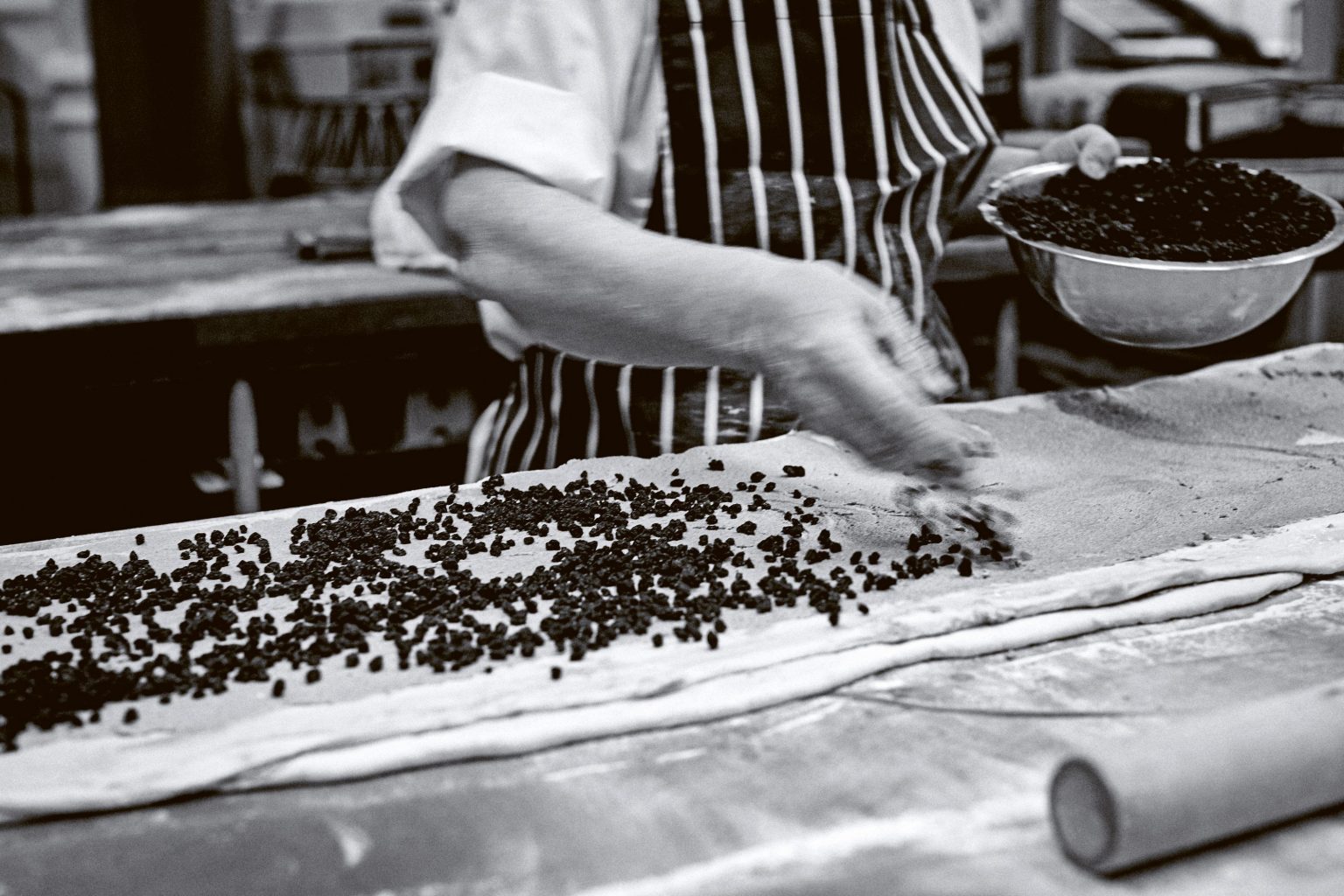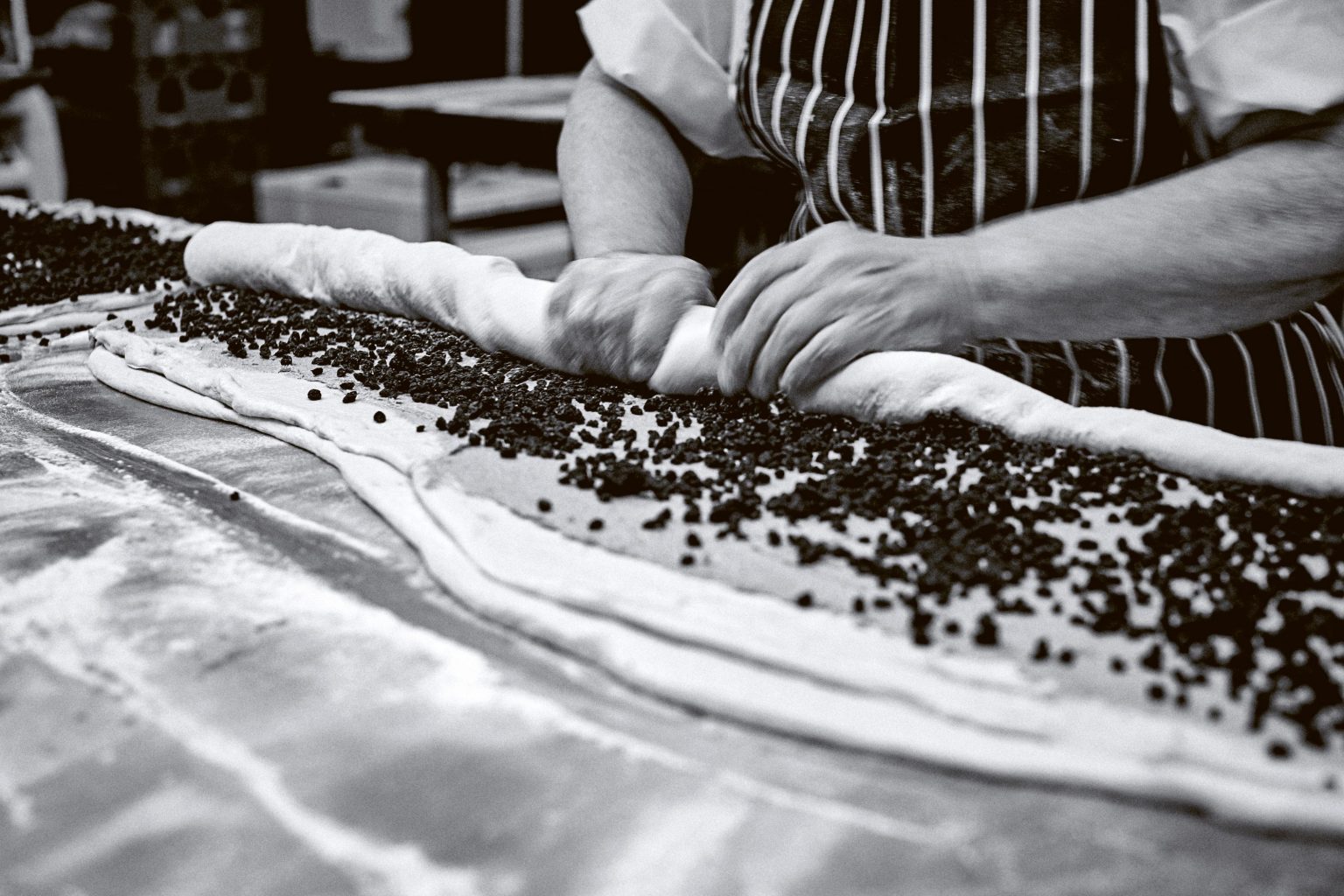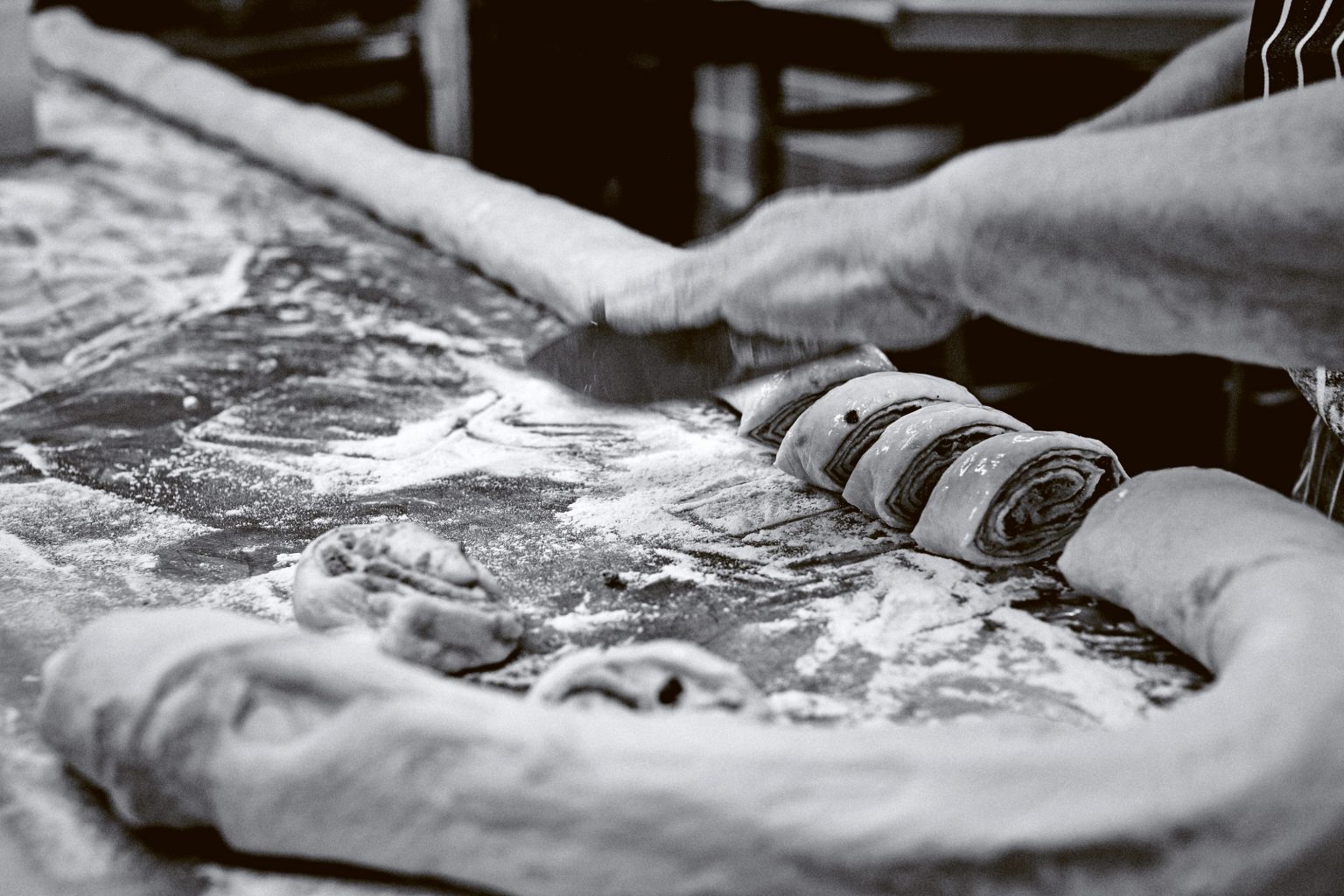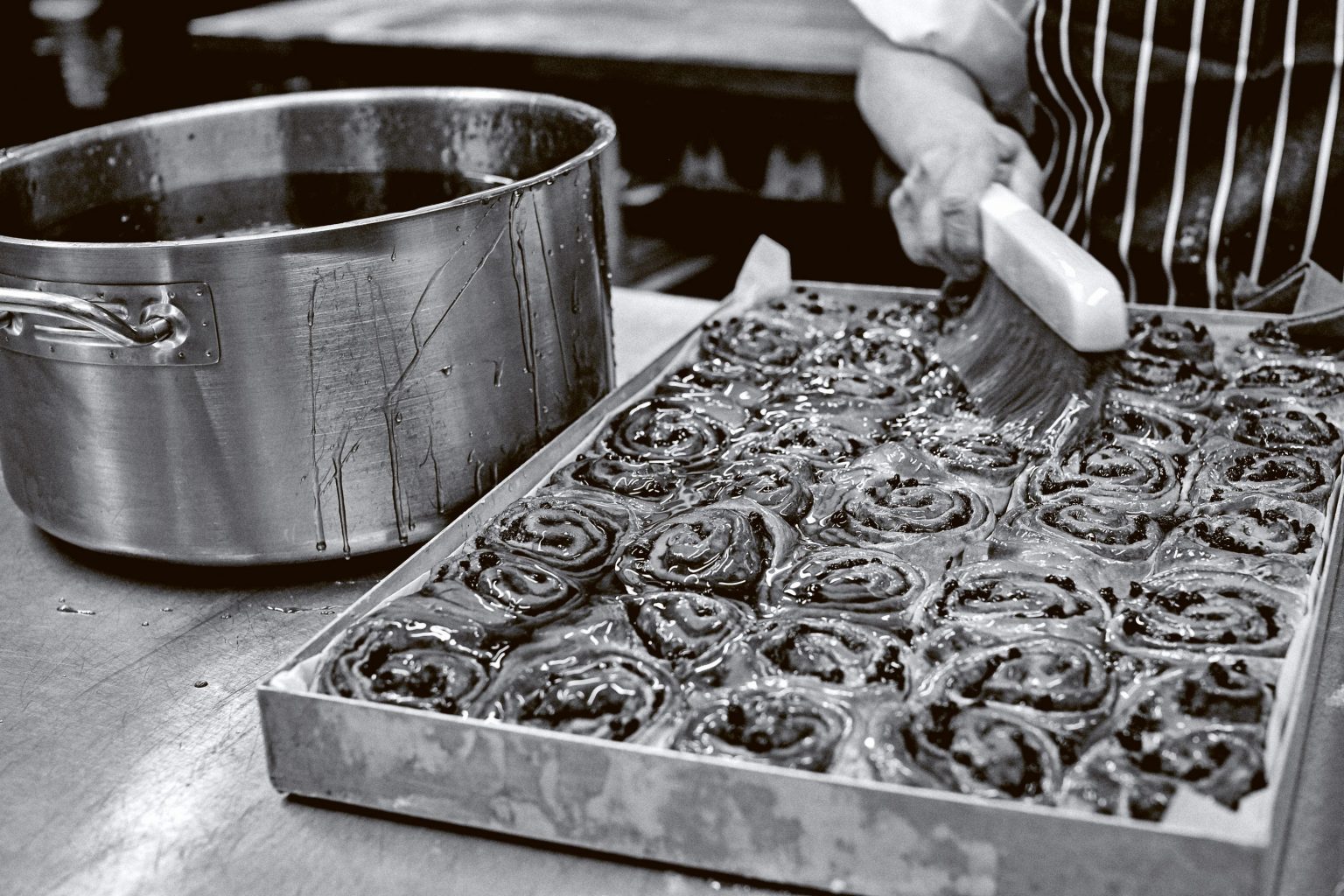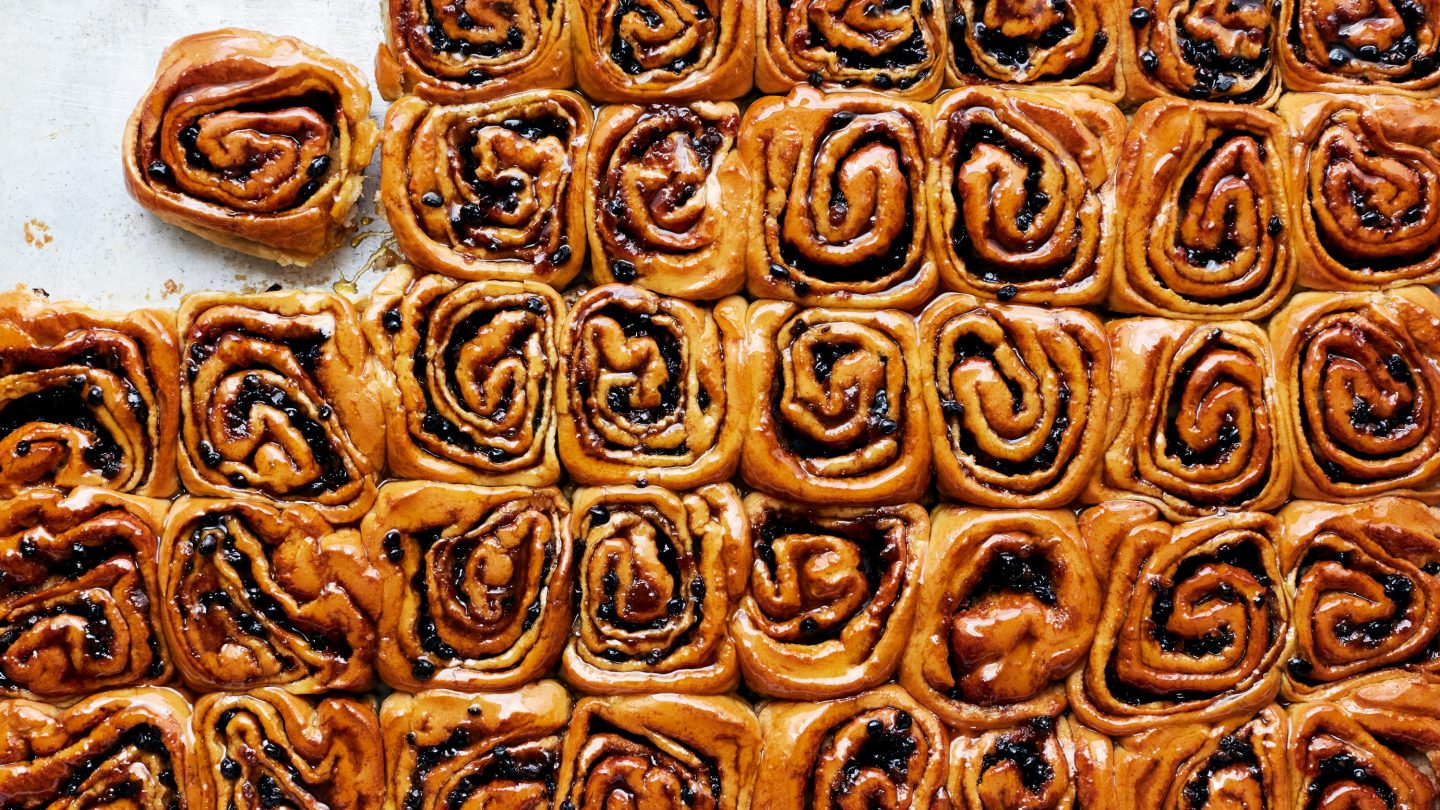
Putting cake (and buns) on the table
Fitzbillies – the legendary Trumpington Street café – has been keeping Cambridge sweet for 100 years.
Was it the Bakewell that clinched it? Fitzbillies was up for sale – and the tart was the finishing touch to the bid of a couple desperate to buy the beloved Cambridge purveyor of buns and nostalgia. The previous owners had gone bankrupt and marketing executive Alison Wright couldn’t bear to give up on a place that had supplied the best cakes of her childhood.
But first she had to convince the landlords – Pembroke – that she could be a worthy custodian of a landmark that has weathered war, rationing, fire and hardship. And so, in her final pitch, she baked the Bursar a monumental tart to accompany her meticulous business plan.
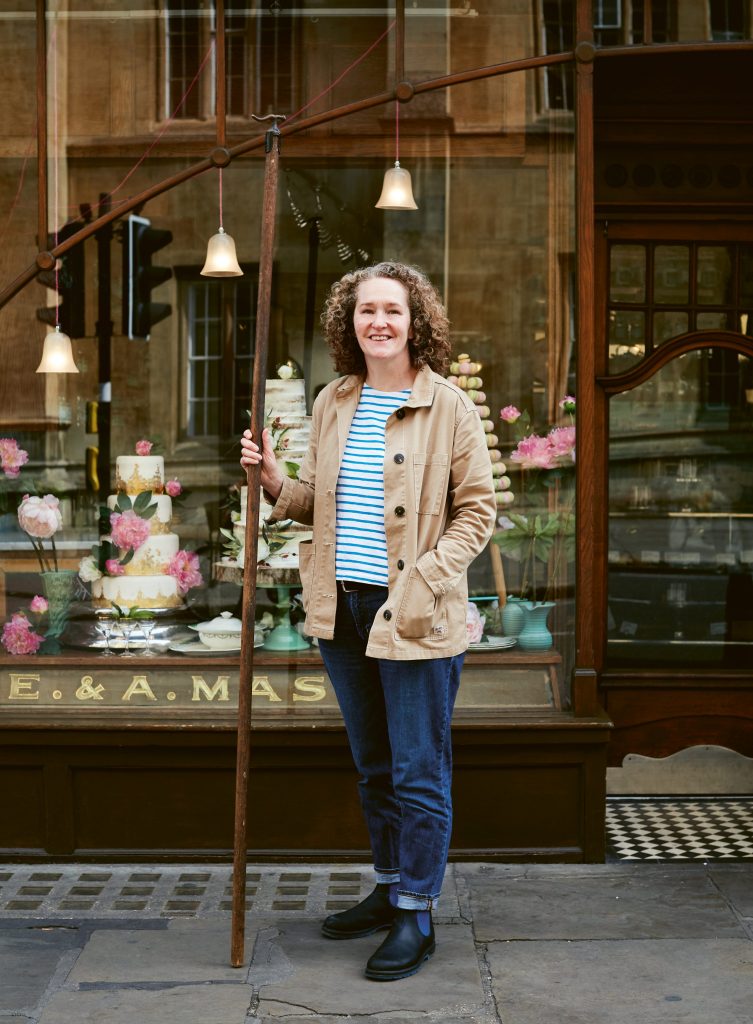
“I guess it was a metaphor,” she says. “Bakewell is a tart that can easily be rendered cloying and horrible. But recreate it with short, buttery pastry, moist frangipane and fresh raspberries and you have something exquisite – the best of the traditional and the new.”
It worked. Pembroke’s team was won over by Wright’s passion for baking and her husband, Tim Hayward’s, conviction they could take the cake shop into the 21st century without trampling on tradition.
Nine years later, Fitzbillies is celebrating its centenary, and, while the humble cake shop has come a long way, it has retained the distinctive shop front and Trumpington Street location, a favourite stopping-off point for students en route to lectures. More scandalously, courgette muffins and brownies now sit alongside the scones and Chelsea buns, and of course it serves coffee of a quality that no 20th-century, postwar-austerity student would recognise.
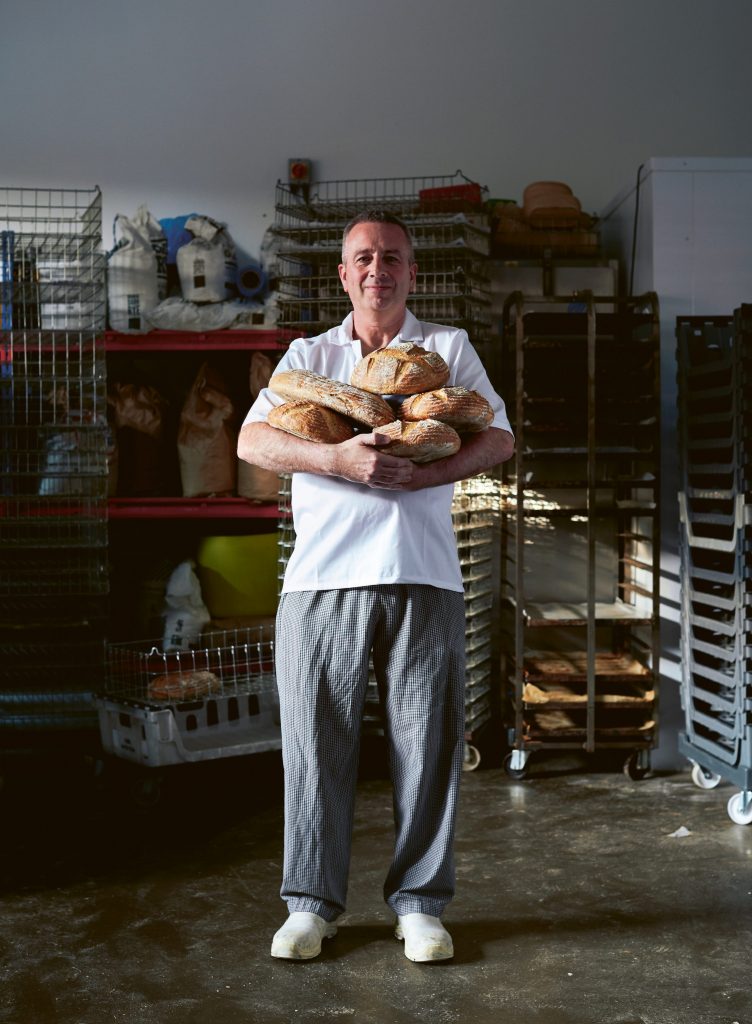
Fitzbillies opened its doors on 4 October 1920. It was founded by brothers Ernest and Arthur Mason (their names are still visible on the shop front) who wanted to put their demob money to good use. A huge brick oven and bakery took up most of the backyard, and the family lived above the business. (Today these serve as lodgings for students, who are some of the café’s best customers.)
It is thought that the brothers intended to call their shop Fitzwilliam’s, after the museum, which is just across the road. No one knows why they didn’t. One theory posits that the Fitzwilliam refused permission, and another that there was already a Fitzwilliam bakery in Ireland. It is certainly true that the motto of Fitzwilliam College’s rowing crew was, and remains, ‘For Fitzbilly pride’. But the most amusing explanation – supplied by the Fitzwilliam Museum’s historian – is that it’s named after the two illegitimate sons, Fitz and Billie, of the Museum’s benefactor, Viscount Fitzwilliam of Merrion. What we do know is that the café flourished, with the brothers Mason serving up a range of no-nonsense cakes and savouries, and providing a rich seam of undergraduate memories.
I ate three square meals in College. Tinned sardines were often on the menu. My women friends were partial to a fondant fancy, so a trip to Fitzbillies was the way to impress
Dr John C Taylor (Corpus 1956), now 83, remembers how Fitzbillies gave a helping hand to dating and romance. In 1950s Cambridge, a combination of rationing, compulsory meals in College, and a lack of affordable cafés and restaurants, made their cakes an even more desirable treat. “Like all undergraduates, I ate three square meals in College. Tinned sardines were often on the menu. My women friends – who were vastly outnumbered by us men – were partial to a fondant fancy, so a trip to Fitzbillies was certainly the way to impress,” he says.
Chelsea buns were already part of Fitzbillies’ mystique. Writing in The Observer Guide to British Cookery in 1984, food writer Jane Grigson (Newnham 1946) vividly recalled the anticipation involved. “The most anxious queues I ever joined were outside Fitzbillies,” she wrote. “No undergraduate tea party was complete without their Chelsea buns, syrupy, well-spiced, licentious and exceptional during the years of ersatz cakes and shortages.”
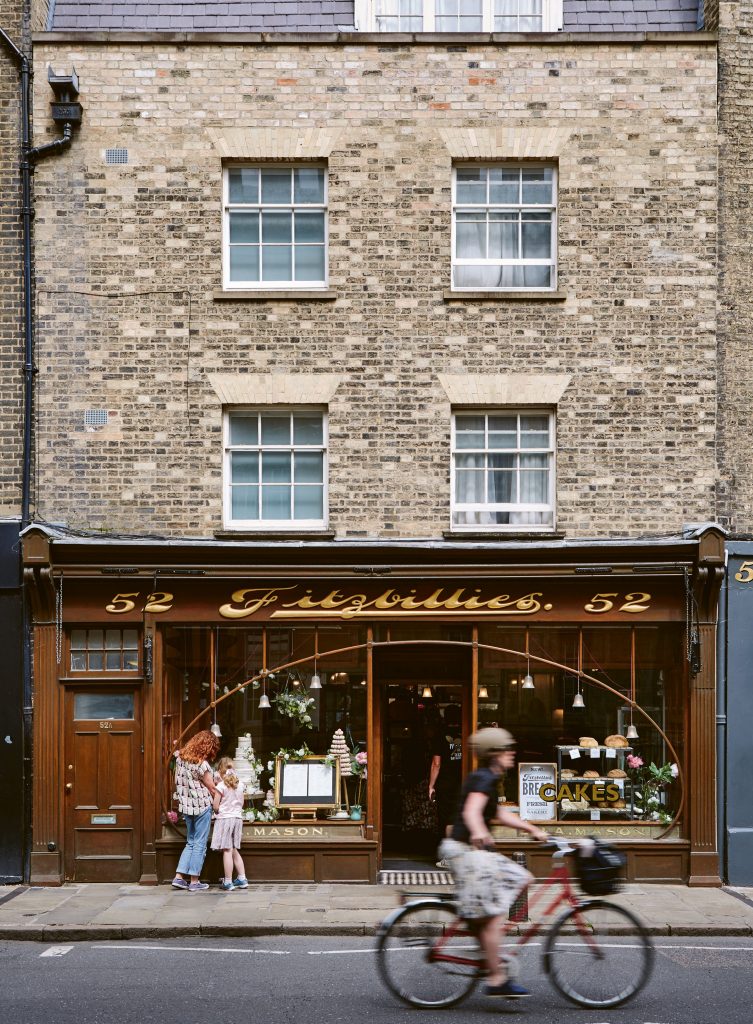
In 1958, the Masons sold Fitzbillies to Garth Day, the son of a local baker; in 1980, the Days sold to Clive and Julia Pledger, who expanded with an in-store shop at the now-defunct Eaden Lilley department store, and a mail-order chocolate business. In 1991 Penny Thompson, a customer of 20 years, took over, opening a tea room on the first floor.
And so it went on – the buns, the fondant fancies, the sausage rolls, until a fateful morning in December 1998, as long-time Fitzbillies baker Gill Abbs recalls. “That morning I tried to walk to work but every street was closed. I knew something was wrong,” she says. When she arrived, she saw a blaze ripping through the building. “It was just before Christmas. It left everything completely black and destroyed.” The fire was reported in the national press and lamented by alumni around the world. Arson was suspected and the shop took nearly two years to rebuild.
The door at the back would open, and down the steps would walk a baker carrying a tray of bun bits. It was a tense moment. The bits were particularly gooey and syrupy and were a great prize – if you could be there at the right time
Happily, Fitzbillies survived, ensuring Chelsea buns continue to count as a basic food group for many undergraduates. However, when Wright took ownership, she realised that something vital was missing – the recipe for those buns that had lured students and dons in their droves.
Wright’s own father, James Wright (St John’s 1961), recalls students waiting like gannets for the off-cuts of Chelsea buns. “We’d queue around the shop counters – there was no café then – and outside in the street in an orderly fashion. Then the door at the back would open, and down the steps would walk a baker carrying a tray of bun bits. It was a tense moment. These were particularly gooey and syrupy – it was a great prize if you could be there at the right time.”
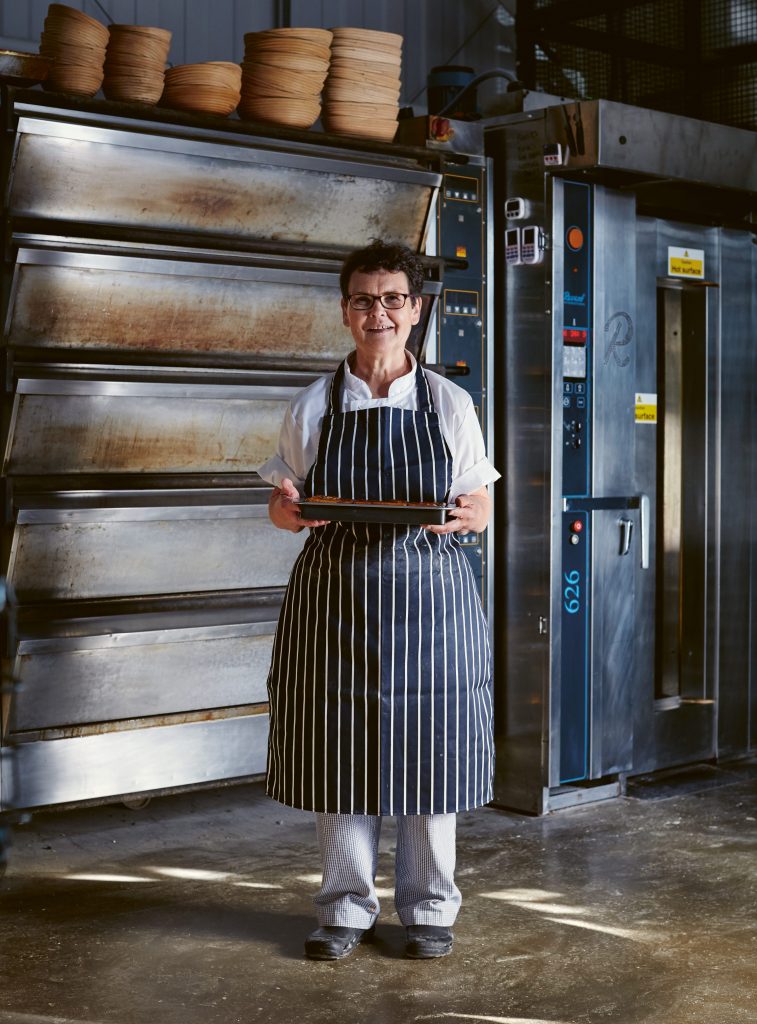
But there was no written recipe for the buns. Rather, Gill Abbs, who has presided over their production for 49 years, had it in her head. Luckily, she was happy to share with the new owners, who hired her pretty much on the spot. “It’s a recipe that doesn’t really belong to me, it belongs to Fitzbillies,” says Abbs.
So how exactly does she do it? Despite having made more than five million buns in her working life, Abbs’s day still starts at 4am, when she comes in to oversee trays of enriched bun dough as they are flattened, spread with butter and fruit, and rolled up tight. Once cooked, a “spectacular” amount of syrup is ladled over – and buns are then placed face down in more syrup, ready to serve. This isn’t any old syrup, says Abbs – it’s made by a small-scale UK producer Ragus (‘sugar’ backwards) almost exclusively for Fitzbillies. “It’s somewhere between golden syrup and treacle, just the right thickness,” says Wright. In an average year, they’ll make some 160,000 Chelsea buns; Abbs bakes or supervises most of them, judging by eye how to cut them.
University towns run on cake, says Wright’s husband, food writer Tim Hayward. “Before the food renaissance hit the city, anyone wanting to eat something that wasn’t brought to a 100ft-long oak table had to go to a pub for a pie or sandwich or to a bakery for a bun.”
Cake shops and cafés have their own daily and annual rhythm, observes Wright. There’s the pre-lecture rush, the mid-morning break for academics and tradespeople, and ‘scone o’clock’, when cream teas are in high demand.
Front-of-house veteran Kirsty Chapman says she can sniff the air and predict if it’s going to be busy indoors or whether sun-seeking customers will want a takeaway. Fitzbillies has its own unique calendar: the flurry of freshers’ week, the mince-pie marathon that is Christmas (King’s choristers are amply supplied), vegan demand during January segueing into treats for Valentine’s and Mother’s Day. Easter leads into the exam-driven hunger of cramming students, then to May Week when fondant fancies are in demand at garden parties – and after that, of course, says Wright, it’s wedding cake season.
But by far her favourite time – and this makes her a little tearful – is the alumni weekend at the end of September. “It’s so lovely to meet people returning and telling us about their fond memories – whether they left in the 1950s or last year.”
New visitors appreciate vegan and gluten-free choices, which might have the original owners turning in their graves. But if there’s one thing Abbs and the current owners aren’t quite in harmony over, it’s lardy cake – older customers are still shocked by its absence from the menu. “We used to make it from the bun dough – add more dried fruit and fold in lard and brown sugar, roll it in thick syrup, tip it over and caramelise it,” says Abbs. “It was a lovely thing to eat, but the public don’t want it. You do have to move with the times.”
Share your Fitzbillies memories: cameditor@alumni.cam.ac.uk
Fitzbillies: The Book
Fitzbillies: Stories and Recipes from a 100-year-old Cambridge Bakery by Alison Wright and Tim Hayward, featuring photographs by Sam A Harris, is published by Quadrille.
To win a copy, enter CAM’s prize crossword.

